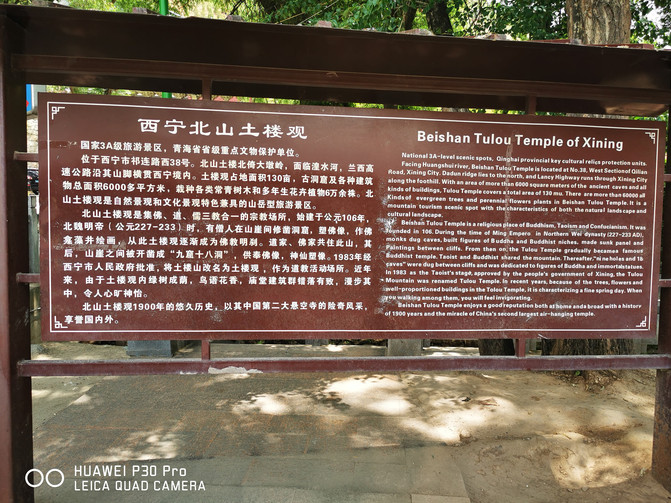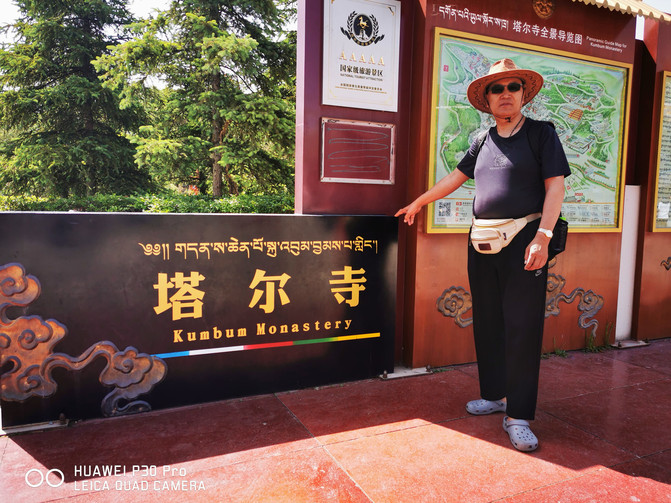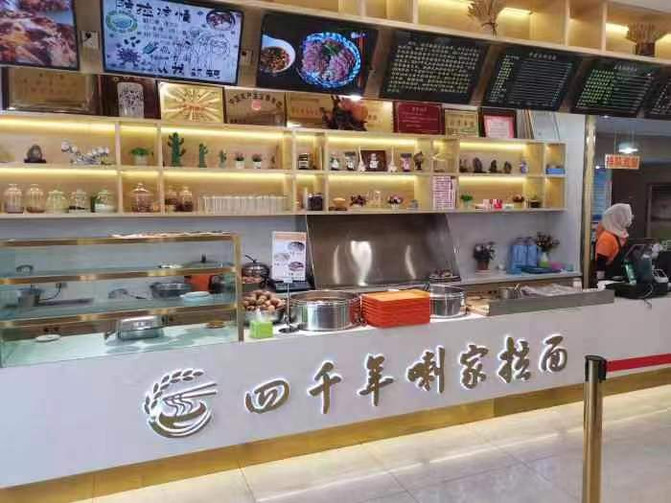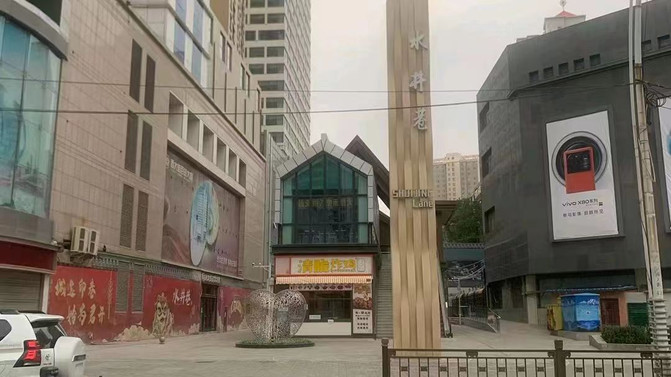Xi'an to Xining to visit relatives and friends, train and high-speed rail tour

D1. After breakfast, take the bus and subway to the railway station and depart for Xining City, the capital of Qinghai Province. After more than ten hours, we arrived in Xining in the evening through Shaanxi, Gansu and Qinghai. Our friends waited there early, taking photos, carrying them to friends 'homes, having dinner, asking about their well-being, arranging for bed, and discussing tomorrow's play itinerary. We were moved by their enthusiasm, thoughtfulness and detail.

D2. My friend got up early and made a hearty breakfast. After the meal, he took a bus to the city for sightseeing to learn about the local customs and customs of the plateau capital, the city's appearance, the stories of the past and the present, the prosperity of the day, and the dim lights at night.
Xining is the capital of Qinghai Province and is named after "tranquility in the west." The northeastern part of Qinghai Province, located on the Qinghai-Tibet Plateau, has a plateau continental climate and is one of the high-altitude cities in the world. The city has a total area of 7660 square kilometers and a population of nearly 2.5 million. It is the eastern gateway to the Qinghai-Tibet Plateau, the only pass through the south road of the ancient "Silk Road" and the "Tang-Tibet Ancient Road". It has been an important transportation artery and a military important place in the northwest since ancient times. It is the political, economic, scientific and educational, cultural, transportation and communication center of Qinghai Province. It is also an inland open city of the country and the residence of the Xining Joint Logistics Support Center of the Central Military Commission. Xining has a long history and culture, unique natural resources, and colorful ethnic customs. It has successively won the title of National Sanitary City, Top 200 Charming Cities with Chinese Characteristics, China's Outstanding Tourist City, China's Advanced Landscaping City, National Forest City, and National Civilized City.

First of all, we went to the north side of the West Route Army Memorial Hall and Martyrs Cemetery of the Chinese Workers and Peasants Red Army in the southwestern suburbs. It is a quiet place for cultivation with green pines and cypresses, shaded by green trees, and endless lawns. May the martyrs rest in peace. Yongning.
Here it tells and shows the bloody battle between the West Route Army and the Kuomintang warlords Ma Bufang and Ma Buqing in Gansu and Qinghai provinces, and the local reactionary militia groups. Under the disadvantage of very difficult supplies, the officers and soldiers of the entire army united as one and fought hard with the enemy for nearly five months. They experienced more than 80 battles of both sizes and sizes, and severely injured the troops of Ma Bufang and Ma Buqing. However, they were ultimately outnumbered and defeated by the troops. Qilian Mountains. The captured personnel of the West Route Army lived in a bloody storm and were forced to endure various humiliations and even died an unnatural death. These heroes, who fought a desperate battle against the enemy on the battlefield, faced the cruel persecution of the enemy after being captured and persisted in the struggle through various means, showing the revolutionary heroism of being unafraid of death, being loyal and fearless. More than 1600 people were killed.
In order to commemorate the heroes of the Red West Route Army, the Xining Municipal Party Committee and Municipal People's Government of the Communist Party of China decided to build a Memorial Hall of the West Route Army of the Chinese Workers and Peasants Red Army in the Martyrs Cemetery in Xining City. Using painting, sculpture, sound, light, electricity, and digital control technology as one, it comprehensively reflects the entire history of the Red West Route Army. Party and state leaders Zhu De, Li Xiannian, Xu Xiangqian and others successively wrote inscriptions for the memorial hall. It has played an important role in promoting the revolutionary history of the West Route Army, educating and motivating contemporary cadres and the masses and the next generation of young people. It is a distinctive patriotic education base and a national clean government education base. As the exhibition hall is under renovation, we only visited and admired the glorious deeds of the heroes on the periphery.



Then I came to the beautiful Beishan Beautiful Garden. There are 400 hectares of permanent green space here. There are beautiful mountains and rivers, lush flowers, and lush water and grass. Fish, ducks and geese are playing happily. The elderly walk and exercise easily, and the young people talk about love and love. Strong, children play happily... According to friends, this is also a barren mountain and ruins, and it has been created by the hard-working and intelligent people of Xining for more than ten years, and finally completely changed its appearance. When you walk into Beishan Beautiful Garden in Xining City, you feel like you are walking into a picturesque Jiangnan water town. We only walked through a very small part of the leisure trails in the 17-kilometer-long Beishan Beautiful Garden and arrived at a temple called Tulou Temple. Tulou Temple is an architectural and cultural tourist attraction with an area of about 1 square kilometer. It is a religious site integrating Buddhism, Taoism and Confucianism. It has a history of nearly 2,000 years. Caves, statues, and Buddhist shrines have been built between the cliffs. and paintings. It's just that the buildings on the cliff are under closed maintenance, so we only visited the halls.







After that, I walked out of the scenic spot and went to a small restaurant in the city. I tasted a bowl of local delicacies "Fireworks Noodles". It was very delicious and was the most common home-cooked food eaten by locals. It was similar to Xi'an's Zhajiang Noodles, except that the noodles were thinner. Like a firecracker fuse.

After lunch, I drove to Dongguan Mosque. It has a history of more than a thousand years and covers an area of 11,940 square meters. It is currently the largest Islamic temple in Qinghai Province and one of the four major mosques in Northwest China. It can accommodate 10000 people to worship at the same time. The worship hall in the middle is the largest building in the whole temple. After entering the temple, I saw the staff setting up the activity facilities for the Ede Festival and the Eid Al-Adha Festival. I visited and listened to the staff's explanations. Although I didn't understand the canon rules and teachings very well, I still felt kindness and positive energy.


Then we drove home to rest, passed by the development zone square and pedestrian street, and felt the rapid development of Xining City and the happiness and well-being of the people. After dinner, my friend took it for a walk and drove to Mazhong Restaurant on Mojia Street, an Internet celebrity check-in site in the city center. He stuffed some local delicacies into his already full stomach, feeling like he wanted to bring them back to Xi'an.




D3. My friend still prepared a sumptuous breakfast, and then took a bus to Taer Temple, the tourist attraction that was most anticipated during the trip. The famous and mysterious trip should be released. After about an hour, I arrived at the terminal station, Taer Temple, walked up the street for about 500 meters, and arrived at the entrance of the scenic spot. The ticket was 70 yuan (half price for those over 60 years old). Following the flow of visitors and pilgrims, we approach Tar Temple step by step. The white towers, red walls, gold tiles, devout believers, and shaking prayer tubes form a beautiful picture under the blue sky and white clouds.
With a history of more than 400 years, this Taer Temple is one of the six major monasteries of the Gelug Sect of Tibetan Buddhism (Yellow Religion) in China, the birthplace of Master Tsongkhapa, the founder of the Yellow Religion, and the center of Buddhist activities in the northwest region. Standing tall on the hillside, it is a huge group of buildings combining Tibetan and Chinese, covering an area of 450,000 square meters, majestic and artistic atmosphere. It is the leading scenic spot and historic site in Qinghai Province and a national key cultural relic protection unit.
Taer Temple is named after the Grand Silver Tower built in Dajinwa Temple to commemorate Tsongkhapa, the founder of the Yellow Religion. It is called "Gunbenxian Balin" in Tibetan, which means "Maitreya Temple where 100,000 lions roar Buddha statues". It is a national 5A-level scenic spot and is famous in China and Southeast Asia. Many emperors in past dynasties have given plaques and titles. Both the Dalai Lama and the Panchen Lama had conducted religious activities in Taer Temple. The crisp oil flowers are lifelike, the murals are not fading for a long time, and the embroidery is bright and bright, and they are known as the "Three Wonders of Ta 'er Temple Art"
。The history of pile embroidery in Huangzhong can be traced back to the period when Princess Wencheng entered Tibet. Princess Wencheng brought silk and embroidery from the Central Plains to Tubo, so various weaving and embroidery techniques gradually spread in the Qinghai-Tibet region. It was against this background that Huangzhong pile embroidery took shape and developed. The popularity of crispy oil flowers and their becoming treasures of Buddhist rites also dates back to Princess Wencheng's entry into Tibet. She took a statue of Sakyamuni at the age of 12 and worshipped it in the Jokhang Temple in Lhasa. The Tubo people made flowers out of butter and offered them to the Buddha to show reverence. Later, various Tibetan Buddhist monasteries were used one after another and regarded as a must-have treasure for Buddhist ceremonies. The offering of crispy oil flowers gradually became an important artifact and a content of ornamental activities in the first month's prayer ceremony. Princess Wencheng connected and witnessed the friendship between the Tang and Tibet and promoted the prosperity and development of politics, religion, culture, animal husbandry, agriculture and other aspects in Xizang. The brilliant history of Xizang for more than 1380 years after Princess Wencheng entered Tibet, as well as the cultural relics and murals remaining in the Potala Palace, are sufficient to show that Princess Wencheng's entry into Tibet has a great impact on national peace and people's harmonious coexistence, enhanced cultural, economic and other exchanges, and greatly promoted the development and progress of Tubo economy and culture, and made great contributions in many aspects. Although she had a high status and was revered as the "Green Tara" by Tibetans, Princess Wencheng made great efforts and sacrifices for this. She entered Tibet at the age of 17 and died at the age of 48 without any children. After the death of her husband Songtsan Gampo, Princess Wencheng lived in Xizang for another 30 years for the sake of the country's peace. Tar Temple also collects many Buddhist classics and academic monographs. There is a lot of incense in the temple, and the annual Buddhist activities "Four Dharma Meetings" are even more lively.








After walking and climbing, I basically visited various halls and places. After two hours, I walked down and ate local food in the town. Then I returned to the station and took the bus back to my home in the city to rest immediately. I was really tired from walking.
At dinner time, on the street at your doorstep, you can taste Xining's kebabs and beer, which is refreshing and heroic.

D4. My friend still prepared a hearty breakfast, and then took a bus to visit the Provincial Museum in the western suburbs. This is the first large-scale museum in the province to take shape in modern functions, with a building area of more than 20,000 square meters. It is a magnificent imitation of the Tang Dynasty building. The collection is rich in cultural relics and spans the past and the past. It covers a wide range of fields, including religion, folk customs, politics, economy, military, production and life, etc. The cultural relics are the most distinctive of the new era painted pottery and ethnic and religious cultural relics. They are responsible for exhibitions and display, cultural relics protection, scientific research, talent team training, and social services. Function, external education publicity and exchanges and other tasks. It is open to the public free of charge and is a national-level museum.
We walked through multiple exhibition halls on the upper and lower floors and browsed through many unfamiliar knowledge, which was quite refreshing.





About two hours later, we arrived at the square outside the museum. On the left are the cultural center, art gallery and library.
Due to light rain and tight time, I didn't visit. Because he was from Shaanxi from Xi'an, his friend took the bus directly to Shanshan Guild Hall. Shanshan Guild Hall is a place where merchants and fellow villagers from Shanxi and Shaanxi provinces gather together, pray for blessings and relax. The guild hall covers an area of about 10 acres. The building structure is exquisite and the various parts are beautifully carved. The halls in the museum have exquisite meanings, showing the solemnity and beauty of ancient Chinese traditional palace buildings and the strong economic strength of Shanshan merchants. After 135 years, it still demonstrates its various functions and provides a place for cultural exchanges, leisure and entertainment for Xining citizens and tourists.
About an hour after the visit, I drove back to my residence and had lunch with friends to show my gratitude.








D5. My friend still prepared a sumptuous breakfast, and then reluctantly bid farewell and asked to see you again in Xi'an. My friends must take a taxi to take us to the train station, wait for the train, pass the inspection, and take the high-speed train back to Xi'an North Railway Station in 5 hours. Then, they will transfer to the subway and take a taxi back home.
This trip has gained a lot and I am filled with emotion. After appreciating the beauty of Qinghai, the sincerity of friends, the greatness of the motherland, and the unity of the nation, we hold together like pomegranate seeds to resist all invading enemies, and live a harmonious and happy life for a long time!
Previous Article:Walk into Xi'an City Wall and experience the new changes in the scenic area!
Next Article:The Ancient Capital of the Thirteen Dynasties, Xi'an in the Five Thousand Years (1)
